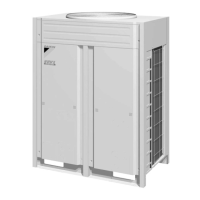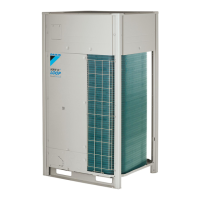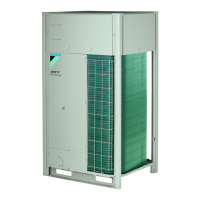SiE39-404
Troubleshooting 157
Part 6
Troubleshooting
1. Troubleshooting by Remote Controller ...............................................160
1.1 The INSPECTION / TEST Button.........................................................160
1.2 Self-diagnosis by Wired Remote Controller .........................................161
1.3 Self-diagnosis by Wireless Remote Controller.....................................162
1.4 Operation of The Remote Controller’s Inspection /
Test Operation Button ..........................................................................165
1.5 Remote Controller Service Mode .........................................................166
1.6 Remote Controller Self-Diagnosis Function .........................................168
2. Troubleshooting by Indication on the Remote Controller....................173
2.1 “A0” Indoor Unit: Error of External Protection Device ...........................173
2.2 “A1” Indoor Unit: PC Board Defect.........................................................174
2.3 “A3” Indoor Unit: Malfunction of Drain Level Control System (S1L)......175
2.4 “A6” Indoor Unit: Fan Motor (M1F) Lock, Overload...............................177
2.5 “A7” Indoor Unit: Malfunction of Swing Flap Motor (MA).......................178
2.6 “A9” Indoor Unit: Malfunction of Moving Part of Electronic
Expansion Valve (20E).........................................................................180
2.7 “AF” Indoor Unit: Drain Level above Limit..............................................182
2.8 “AJ” Indoor Unit: Malfunction of Capacity Determination Device..........183
2.9 “C4” Indoor Unit: Malfunction of Thermistor (R2T)
for Heat Exchanger ..............................................................................184
2.10 “C5” Indoor Unit: Malfunction of Thermistor (R3T) for Gas Pipes..........185
2.11 “C9” Indoor Unit: Malfunction of Thermistor (R1T) for Suction Air.........186
2.12 “CJ” Indoor Unit: Malfunction of Thermostat Sensor
in Remote Controller ............................................................................187
2.13 “E1” Outdoor Unit: PC Board Defect ......................................................188
2.14 “E3” Outdoor Unit: Actuation of High Pressure Switch..........................189
2.15 “E4” Outdoor Unit: Actuation of Low Pressure Sensor..........................190
2.16 “E5” Compressor Motor Lock ................................................................191
2.17 “E6” Compressor Motor Overcurrent/Lock ............................................192
2.18 “E7” Malfunction of Outdoor Unit Fan Motor..........................................193
2.19 “E9” Outdoor Unit: Malfunction of Moving Part of Electronic
Expansion Valve (Y1E, Y2E)................................................................195
2.20 “F3” Outdoor Unit: Abnormal Discharge Pipe Temperature ..................197
2.21 “F6” Refrigerant Overcharged ...............................................................198
2.22 “H7” Abnormal Outdoor Fan Motor Signal.............................................199
2.23 “H9” Outdoor Unit: Malfunction of Thermistor for Outdoor Air (R1T).....200
2.24 “J2” Current Sensor Malfunction...........................................................201
2.25 “J3” Outdoor Unit: Malfunction of Discharge Pipe Thermistor
(R3, R31~33T) .....................................................................................202
2.26 “J5” Outdoor Unit: Malfunction of Thermistor (R2T)
for Suction Pipe....................................................................................203
2.27 “J6” Outdoor Unit: Malfunction of Thermistor (R4T) for
Outdoor Unit Heat Exchanger ..............................................................204
2.28 “J8” Malfunction of Oil Equalizing Pipe Thermistor (R7T).....................205
2.29 “J9” Malfunction of Receiver Gas Pipe Thermistor (R5T).....................206
2.30 “JA” Outdoor Unit: Malfunction of Discharge Pipe Pressure Sensor.....207

